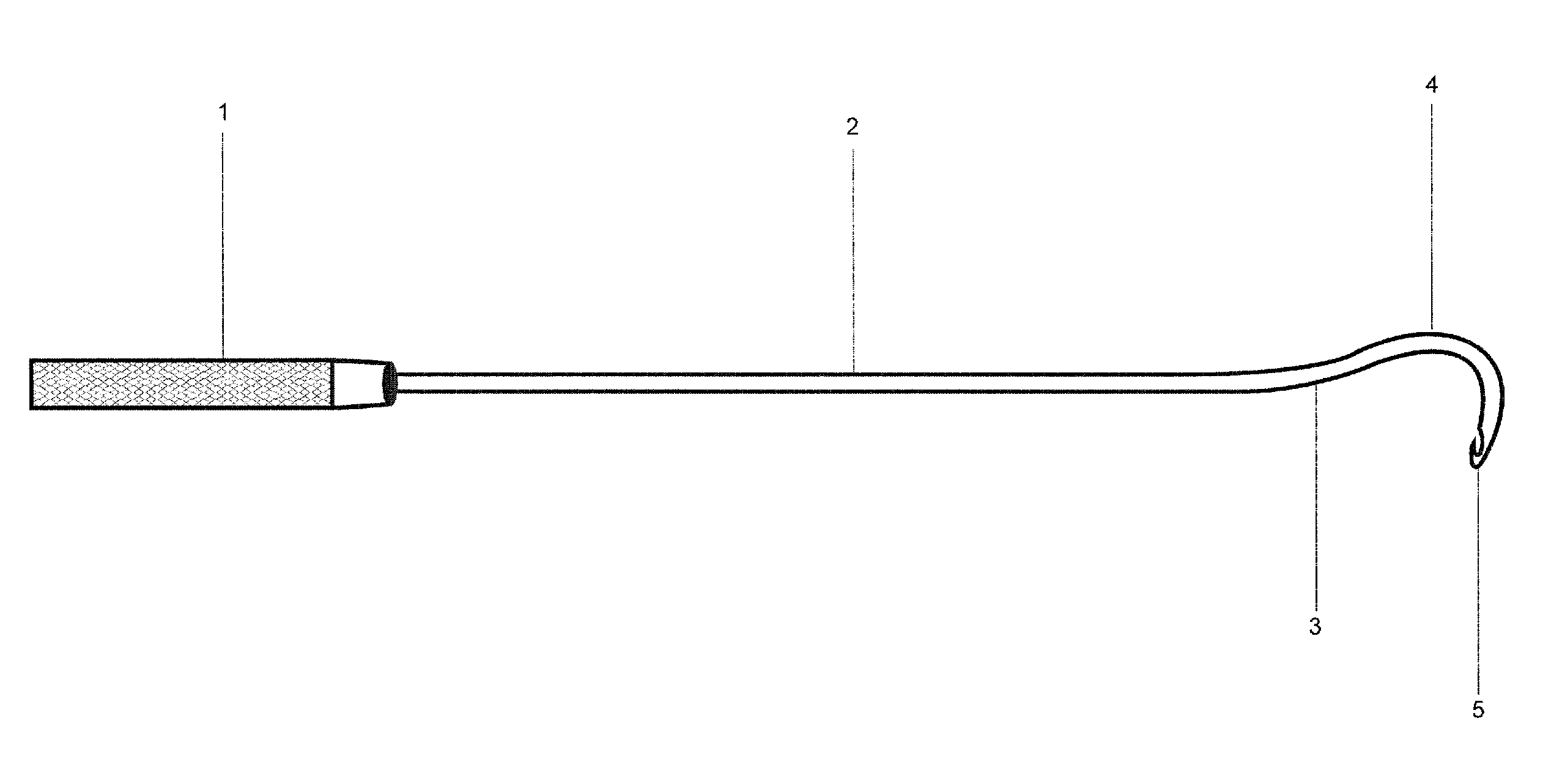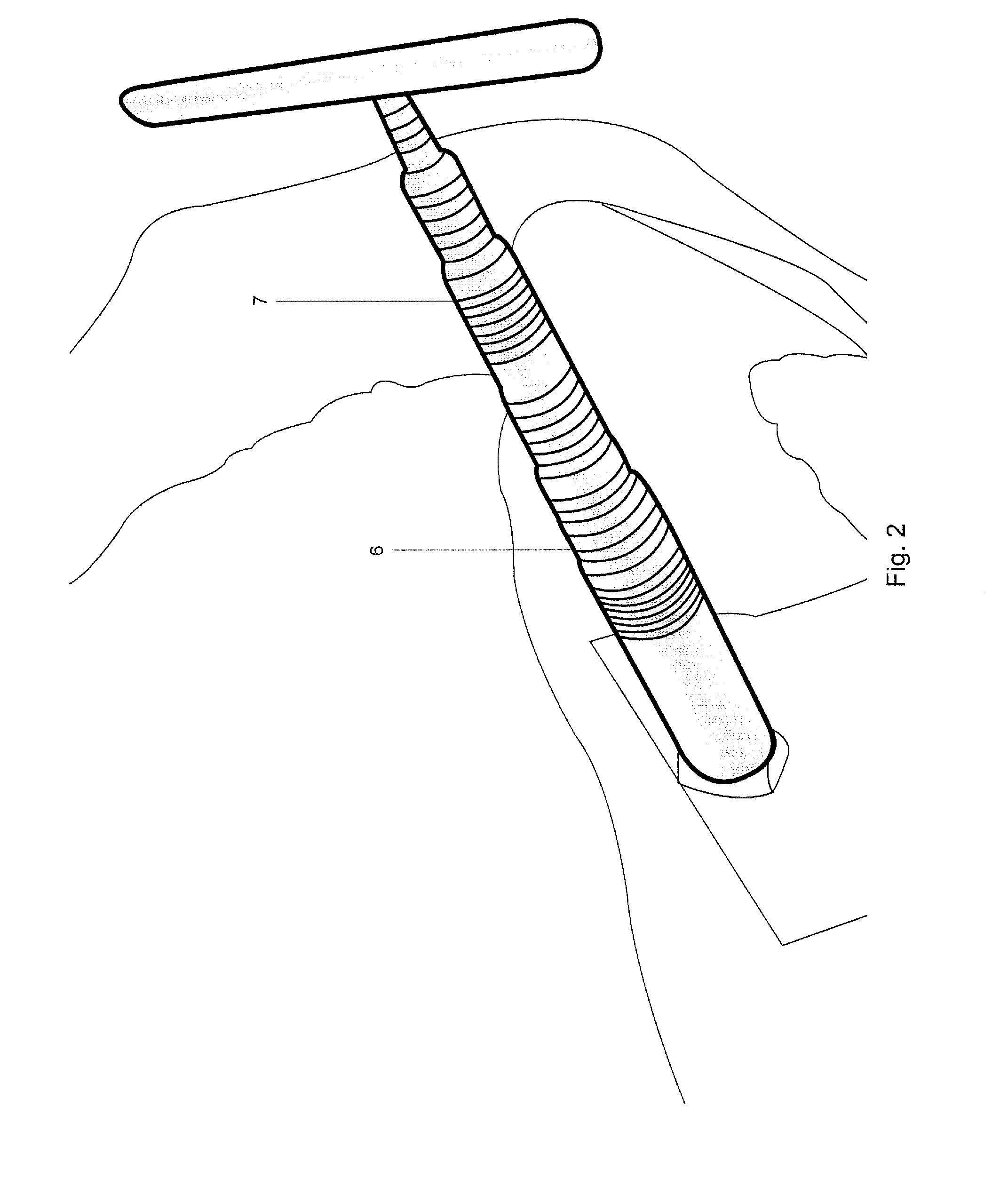Minimally Invasive Instruments and Methods for the Micro Endoscopic Application of Spine Stabilizers in the Interspinous Space
a spine stabilizer and micro-endoscopic technology, applied in the field of minimally invasive instruments and methods for the micro-endoscopic application of spine stabilizers in the interspinous space, can solve the problems of pain in the back and neck, pain in the back and other symptoms, and the loss of flexibility, elasticity and absorption capacity of impact force of the intervertebral disk, etc., to improve the minimally invasive surgery technique of the spine, improve the effect of safety and simple method
- Summary
- Abstract
- Description
- Claims
- Application Information
AI Technical Summary
Benefits of technology
Problems solved by technology
Method used
Image
Examples
Embodiment Construction
[0058]Regarding FIG. 1, a hook in distal support with a length of about 21 cm is observed, it has a retention sleeve (1) with a knurled surface which offers a nonskid feature, followed by a rod (2) continuing in a curvature (3) of 60±15 degrees regarding the axis of the rod and arch length (4) of about 50±10 mm, the hook which in its distal end has a fishhook-shaped tip (5) with an opening of about 8 degrees, which allows to fasten the suture of any implant. The curvature and arch length of the hook used in the method disclosed herein will be determined by the size of the involved spinous apophysis.
[0059]The stages of preparation previous to the method for the micro endoscopy surgery disclosed herein, are the ones already known in the art. In the claimed method the steps to locate the zone of the affected central intervertebral space (16) are involved, identifying the upper spinous apophysis (15) and the lower spinous apophysis (14) and marking the insertion site with a line paralle...
PUM
 Login to View More
Login to View More Abstract
Description
Claims
Application Information
 Login to View More
Login to View More - R&D
- Intellectual Property
- Life Sciences
- Materials
- Tech Scout
- Unparalleled Data Quality
- Higher Quality Content
- 60% Fewer Hallucinations
Browse by: Latest US Patents, China's latest patents, Technical Efficacy Thesaurus, Application Domain, Technology Topic, Popular Technical Reports.
© 2025 PatSnap. All rights reserved.Legal|Privacy policy|Modern Slavery Act Transparency Statement|Sitemap|About US| Contact US: help@patsnap.com



